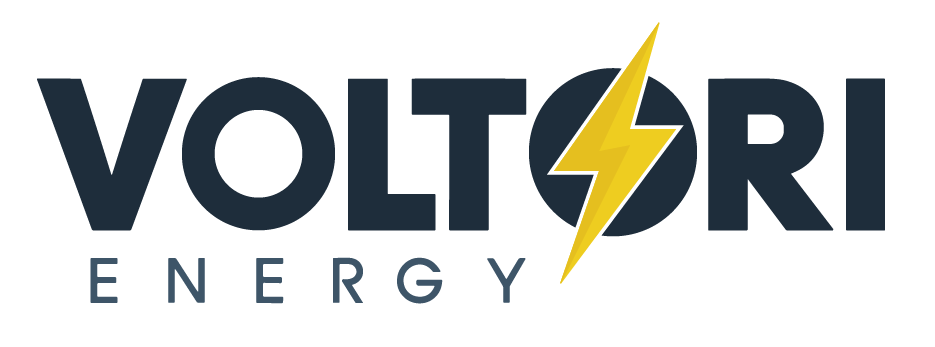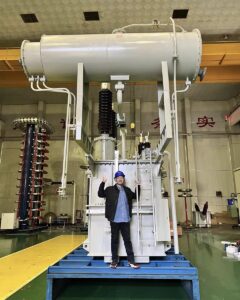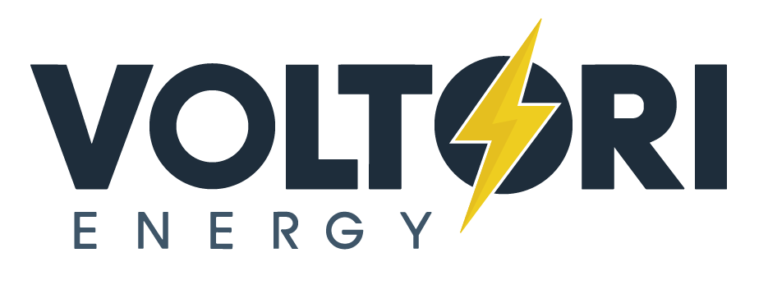Navigating Canada's bilingual labeling requirements has been one of the most frustrating challenges for our transformer clients. They often face delays, rejections, and unexpected costs because they misunderstood these complex regulations.
In Canada, power transformers generally require bilingual (English and French) labels for consumer-facing information and safety warnings, but certain technical specifications may remain in English only when intended exclusively for trained technicians. Equipment safety information must always be provided in both official languages.
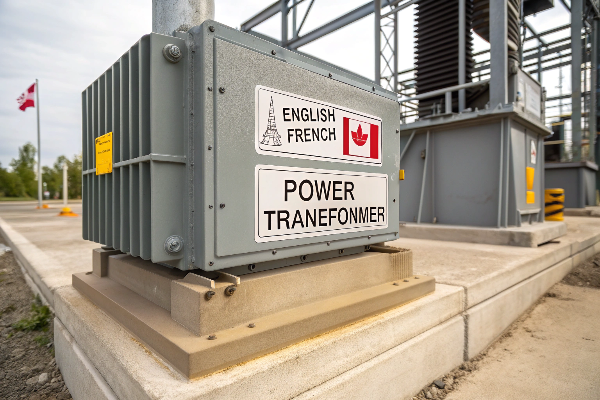
I've seen too many projects delayed because companies assumed their standard North American labels would suffice in Canada. Let me walk you through the essential requirements so you can avoid these costly mistakes and ensure your transformers meet all Canadian bilingual labeling standards.
What Are the Bilingual Labelling Requirements in Canada?
The confusion around bilingual labels has caused several of our clients to face non-compliance issues. One client nearly lost a $2 million contract because their imported transformers didn't meet Canadian language requirements.
Canada's Official Languages Act requires that all product information essential for consumer use, including safety warnings, installation instructions, and warranty information, must appear in both English and French. This applies to transformers sold anywhere in Canada, with Quebec having additional requirements under Bill 101.
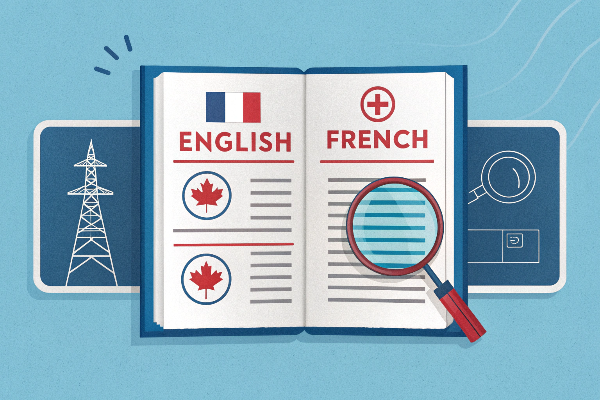
In my 15 years working with power transformers across every Canadian province, I've noticed significant inconsistency in how bilingual requirements are applied to industrial equipment. The Consumer Packaging and Labelling Act technically applies to consumer products, not industrial equipment, creating a gray area for specialized electrical components like transformers.
| Regulation | Applies To | Bilingual Requirements |
|---|---|---|
| Official Languages Act | All products sold in Canada | Essential product information must be in English and French |
| Consumer Packaging and Labelling Act | Consumer products | All consumer-facing information must be bilingual |
| Quebec's Charter of the French Language (Bill 101) | All products in Quebec | French must be at least as prominent as English |
| Canadian Electrical Code | Electrical equipment | Safety warnings must be bilingual |
One key distinction I've observed is between "consumer-facing" and "technician-facing" information. For example, detailed technical specifications that would only be accessed by qualified electricians can sometimes remain in English only, especially if they contain standardized electrical terminology. However, any information relevant to general safety, maintenance schedules, or basic operation absolutely must be bilingual.
Quebec presents a particular challenge with its Charter of the French Language (Bill 101). I've had clients whose transformers passed federal inspections but were rejected in Quebec because the French text wasn't given equal or greater prominence than the English text. In Quebec, not only must the information be in both languages, but French must be at least as prominent as English on all labels and documentation.
What Are the Mandatory Labelling Requirements in Canada?
I once faced a situation where a client's transformers were held at the border for three weeks because they failed to include certain mandatory label elements. Their costly delay could have been avoided with proper planning.
Mandatory labeling for transformers in Canada includes the manufacturer's name and address, model and serial numbers, electrical ratings, certification marks (like CSA or cUL), hazard warnings, and installation instructions. All safety-related information must appear in both English and French regardless of where the equipment will be installed.
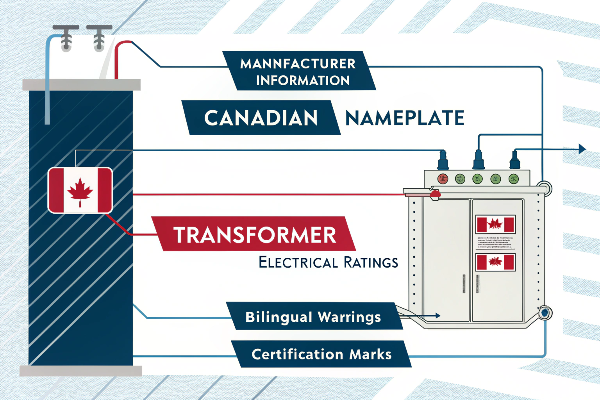
Beyond just bilingual requirements, there are specific content mandates that apply to transformers in Canada. Through our work at Voltori Energy, I've developed a comprehensive understanding of these requirements that go beyond what many manufacturers initially expect.
| Required Information | Bilingual Requirement | Details |
|---|---|---|
| Manufacturer Name and Address | Recommended | Legal entity responsible for the equipment |
| Model and Serial Numbers | Not required | Alphanumeric identifiers can remain in original format |
| Electrical Ratings | Not required for technical values | Voltage, current, frequency specifications |
| Certification Marks | Not required | CSA, cUL, or other recognized certification symbols |
| Hazard Warnings | Mandatory bilingual | All safety warnings must be in both languages |
| Installation Instructions | Mandatory bilingual | Step-by-step guidance for proper installation |
| Maintenance Information | Mandatory bilingual | Procedures for safe maintenance |
| Environmental Ratings | Mandatory bilingual | Indoor/outdoor use specifications |
| Weight and Dimensions | Not required for numeric values | Physical specifications |
The Canadian Electrical Code (CEC) requires that all electrical equipment, including transformers, display specific information regardless of language. These requirements are enforced through certification bodies like the CSA Group (Canadian Standards Association).
What complicates matters is that these requirements can vary based on the transformer's application. For example, transformers for renewable energy installations may need additional information about grid connectivity and compliance with distributed generation standards. This is why at Voltori, we always conduct a thorough analysis of each client's specific application before finalizing label designs.
Do Supplier Labels Need to Be Bilingual?
A recurring issue I encounter is confusion about supplier versus manufacturer labels. One client assumed their supplier labels could remain in English only because they weren't the end manufacturer, leading to compliance issues.
In Canada, supplier labels on transformers generally need to be bilingual when they contain safety information, operating instructions, or product identification that end users might need. Technical documentation intended only for qualified personnel may sometimes remain in English, though providing bilingual information is always safer from a compliance perspective.
](https://voltoritransformer.com/wp-content/uploads/2025/08/image-4-a-3d-render-style-close-up-of-multiple-sup.png)
The distinction between supplier and manufacturer labeling creates significant confusion in the transformer industry. From my experience managing transformer projects across Canada, I've learned that responsibility doesn't end with the final manufacturer – each component supplier has obligations too.
| Documentation Type | Examples | Bilingual Requirement |
|---|---|---|
| End-User Safety Information | Warning labels, emergency procedures | Mandatory bilingual |
| Operation Instructions | Control panel labels, user interfaces | Mandatory bilingual |
| Maintenance Procedures | Servicing schedules, replacement parts | Mandatory bilingual |
| Technical Specifications | Circuit diagrams, load calculations | Often exempted (technician-only) |
| Internal Component Labels | Hidden internal parts | Often exempted |
| Supplier Identification | Manufacturer name on components | Recommended but not always required |
When a transformer includes components from multiple suppliers, each critical component typically retains its original supplier label. These supplier labels become part of the overall compliance picture. For example, if a transformer includes an imported cooling system with its own control panel, that panel's labels must also meet Canadian bilingual requirements if they contain operational information.
I've witnessed firsthand how supply chain complexity impacts this requirement. When transformers contain components from global suppliers, coordinating bilingual labeling becomes exponentially more difficult. We've developed relationships with suppliers who can provide Canadian-compliant labels, which significantly simplifies the process for our clients compared to trying to create compliant overlabels for imported components.
One pragmatic approach I recommend is creating a master bilingual nameplate that references all supplier documentation by component number, with a separate bilingual appendix that contains translations of critical supplier information. This solution has helped several of our clients meet compliance requirements without requiring extensive relabeling of individual components.
Do Cosmetics Have to Have French and English Labels?
While working on a transformer project for a high-profile retail installation, I was surprised when the client raised concerns about the "cosmetic appearance" of bilingual labels, wondering if aesthetic elements required translation.
Yes, even cosmetic products sold in Canada require bilingual labels in both French and English. While power transformers aren't cosmetic products, any decorative elements or branding on transformers that contain words, slogans, or consumer-facing information must also comply with bilingual requirements across Canada.
 on equipment](https://voltoritransformer.com/wp-content/uploads/2025/08/image-5-a-watercolor-style-artistic-interpretation.png)
Although transformers are industrial equipment rather than cosmetics, the question raises an important point about aesthetic elements on industrial equipment. Through my work at Voltori Energy, I've observed an interesting trend where the line between functional and decorative aspects of equipment becomes important from a regulatory perspective.
| Element Type | Examples | Bilingual Requirement | Notes |
|---|---|---|---|
| Company Logo | Wordmark, symbol | Required if text-based | Symbolic logos may be exempt |
| Product Name | Model designation | Required if word-based | Alphanumeric codes may be exempt |
| Marketing Slogans | Promotional phrases | Mandatory bilingual | All text must be in both languages |
| Decorative Text | Design elements with words | Mandatory bilingual | Even artistic text requires translation |
| Warning Symbols | Hazard icons | Not required | Standardized symbols are universal |
| Company Contact Info | Website, phone number | Recommended | Contact points should be bilingual |
The Canadian Consumer Packaging and Labelling Act specifically addresses cosmetic products, requiring bilingual labeling for all consumer-facing information. While transformers don't fall under this specific regulation, the principle extends to any decorative or brand elements that appear on industrial equipment sold in Canadian markets.
In my experience, many international manufacturers overlook this aspect, focusing only on technical compliance while neglecting branding elements. We've had cases where equipment passed all technical inspections but faced pushback from clients in Quebec because decorative text elements weren't translated.
The practical solution we've implemented at Voltori is to create a clear separation between regulatory/technical labels and brand elements. By keeping branding minimal and symbolic rather than text-heavy, we can often avoid additional translation requirements while maintaining visual identity. When text is necessary, we design bilingual branding from the start rather than trying to retrofit translations later.
Conclusion
Navigating Canada's bilingual labeling requirements for transformers demands attention to both federal and provincial regulations, with safety information always requiring both English and French. Don't risk costly delays – ensure your transformer labels meet all Canadian requirements.
Voltori Energy specializes in Canadian-compliant transformer solutions, ensuring your renewable energy projects succeed with properly labeled, certified equipment built for Canadian standards.
